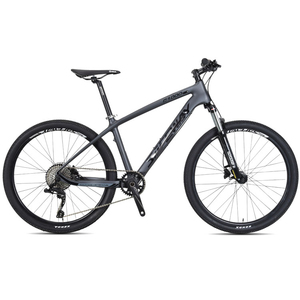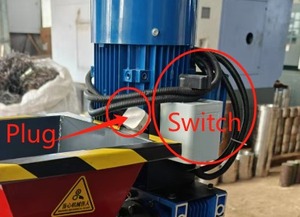(193 products available)




































































































































































































Null tires, also known as solid tires, are a type of tire commonly used in industrial and construction equipment. Unlike pneumatic tires, which are filled with air and can go flat, solid tires are made entirely of solid rubber. This construction provides several advantages, including improved load-bearing capacity, durability, and resistance to punctures and cuts. Here are some common types of null tires:
Polyurethane Tires
Polyurethane tires are a subtype of null tires with several advanced features. They are manufactured from a special blend of polyurethanes that combines the best attributes of rubber and plastic. Polyurethane tires are known for their excellent wear resistance, low rolling resistance, and high load-bearing capacity. They are widely employed in warehouse operations, material handling equipment, and logistics where durability and efficiency are crucial.
Poly Tires
Poly tires are a popular choice for off-road vehicles, ATVs, and UTVs. They are designed to enhance traction, stability, and durability in rugged terrains. Poly tires are typically made from a blend of synthetic polymers and rubber compounds, providing a balance between grip and wear resistance. They often feature aggressive tread patterns with deep treads, large lugs, and self-cleaning capabilities to optimize traction in mud, sand, and rocky environments. In addition, poly tires usually have reinforced sidewalls to resist punctures and cuts, ensuring prolonged service life in demanding off-road applications.
Solid Forklift Tires
These tires are null tires that have been particularly designed for industrial trucks and forklifts. They are manufactured from solid rubber, offering exceptional durability, longevity, and low maintenance requirements. Solid forklift tires are ideal for applications involving heavy loads, such as in warehouses, distribution centers, and manufacturing facilities. They provide excellent traction, stability, and operator safety on smooth concrete floors and industrial environments. However, it is worth noting that solid forklift tires have a higher initial purchase cost compared to traditional pneumatic tires. In addition, they also have a higher level of noise and rolling resistance.
Null-modem cables
These are special types of cables used to connect devices without the use of a null modem. They are used to establish serial communication between computers and other devices. Typically, null-mododem cables are used to connect two computers directly or connect a computer to a network printer. There are two main types of null-modem cables, which are the standard and custom types. Standard null-modem cables are used for most basic applications. They have eight pins connected, and the internal wiring follows the standard null modem. Custom null-modem cables are constructed according to specific connection requirements. The pin connections and internal wiring can be modified to meet particular communication protocols or custom needs.
Here are some specifications of null tires:
Size
Null tires are available in various dimensions to suit distinct vehicle types and weights. The null tire size is given by three sets of numbers. The first number is the tire width in millimeters. The second number is the aspect ratio, which is the height of the tire sidewall compared to its width. The third number is the diameter of the wheel in inches.
Load rating
Load rating indicates the maximum null tire capacity. It is a null tire specification that every dealer and end user should be conversant with. The null tire load rating is displayed as a number on the sidewall of the tire. Each number represents a specific load capacity in pounds or kilograms. For instance, a null tire with a load rating of 800 can carry up to 800 pounds.
Speed rating
Speed rating indicates the maximum null tire speed. The null tire speed rating is given as a letter on the sidewall. Each letter corresponds to a speed capability in miles per hour. For example, a null tire with a speed rating of R can travel at speeds of up to 106 mph.
Tread pattern
Null tires have various tread patterns designed for different road conditions and performance requirements. A null tire's tread pattern consists of the tread blocks, grooves, and channels. The design offers traction, stability, and handling on diverse surfaces. Some common null tire tread patterns include symmetrical, asymmetrical, and directional types.
Null tire maintenance requirements
Here are the maintenance requirements for null tires:
Check tire pressure
It is required that users check the null tire pressure at least once a week. In addition, the pressure should be checked before setting out on a long trip. The null tire pressure should be in line with the manufacturer's recommendation. Correct pressure is crucial for null tire performance and safety.
Inspecting tire tread depth and wear
The null tires should be examined for signs of wear or damage. Discoloration, cuts, blisters, or punctures on the tread or sidewall may compromise null tire integrity. In addition, the tread depth should be measured with a tread depth gauge or a penny. The null tire should be replaced if the depth is less than the recommended limit.
Rotating and aligning tires
The null tires should be rotated every 5,000 to 8,000 miles or as recommended. Tire rotation promotes even null tire wear and extends null tire life. Null tire alignment is also important. It ensures that the null tires make contact with the road in a uniform manner. The null tire pressure and alignment should be checked after every 10,000 miles.
Balancing tires
The null tires should be balanced during installation and after every 10,000 miles. Tire balancing eliminates null tire vibration and promotes smooth null tire performance and vehicle operation.
Storing null tires
When not in use, null tires should be stored in a cool and dry environment away from direct sunlight and heat sources. This prevents null tire degradation and prolongs null tire durability.
When choosing null tires for different purposes, consider the following factors:
Load Capacity
Each tire has a load rating that corresponds to the maximum load it can support. When the load rating is surpassed, the tire may wear out sooner or be damaged, and handling may be affected. The null tire load capacity should be checked to ensure it fits the vehicle's requirements.
Speed Rating
Null tires have speed ratings that indicate the maximum speed at which they may be safely operated. The speed rating must be equal to or greater than the vehicle's maximum design speed. The speed rating should be checked to ensure it meets the needs of the vehicle.
Weather Conditions
Consider the weather conditions where the vehicle will be driven. Hard null tires offer excellent grip on dry roads, but they may not perform well in wet, snowy, or icy conditions. If the vehicle must drive in inclement weather, consider null tires with a more versatile tread design.
Road Type
Consider the type of roads the vehicle will be driven on. Null tires are designed for highways and well-maintained roads. If the vehicle must travel on rough or unpaved roads, consider null tires specifically engineered for off-road use.
Noise and Comfort
Null tires can be noisy due to their hard rubber compounds and tread patterns. If noise is a concern, consider null tires designed to minimize noise. Similarly, null tires with a tread pattern that prioritizes comfort and low vibration should be considered.
Price
Null tires come in various price ranges based on brand, type, and size. Setting a budget before purchasing is essential, but remember that null tires may offer long-term savings due to their durability and low maintenance requirements.
Replacing null tires might seem complex, but with the right tools and instructions, it can be done. Here are some steps on how to do it:
Tools needed:
Steps:
Q: What are null tires?
A: Null tires, also known as ""no-flat"" or ""puncture-proof"" tires, are a type of tire designed to eliminate the need for inflation and the risk of punctures. They are typically made from solid rubber or have a foam insert that prevents deflation.
Q: What is the benefit of null tires?
A: Null tires have several advantages over traditional pneumatic tires. They provide a consistent, cushioned ride, are puncture-proof, and require little to no maintenance. This makes them ideal for applications where downtime from flat tires is unacceptable.
Q: Do null tires provide a comfortable ride?
A: The comfort level of null tires can vary depending on the design and application. While they are suitable for many uses, such as garden equipment and industrial carts, some users may find the ride less comfortable than traditional inflated tires, especially on rough terrain.
Q: Where can people use null tires?
A: Null tires are suitable for various applications, including outdoor equipment (like lawnmowers and garden carts), industrial vehicles (like forklifts and warehouse carts), and even some specialized medical and mobility equipment. Essentially, any application where flat tires can cause significant disruption or risk can benefit from null tires.
Q: Do null tires have tread patterns?
A: Yes, null tires come with tread patterns. The tread design can vary depending on the type of null tire and its intended application. Tread patterns are generally designed to provide traction, durability, and performance characteristics suited to specific terrain or operating conditions.